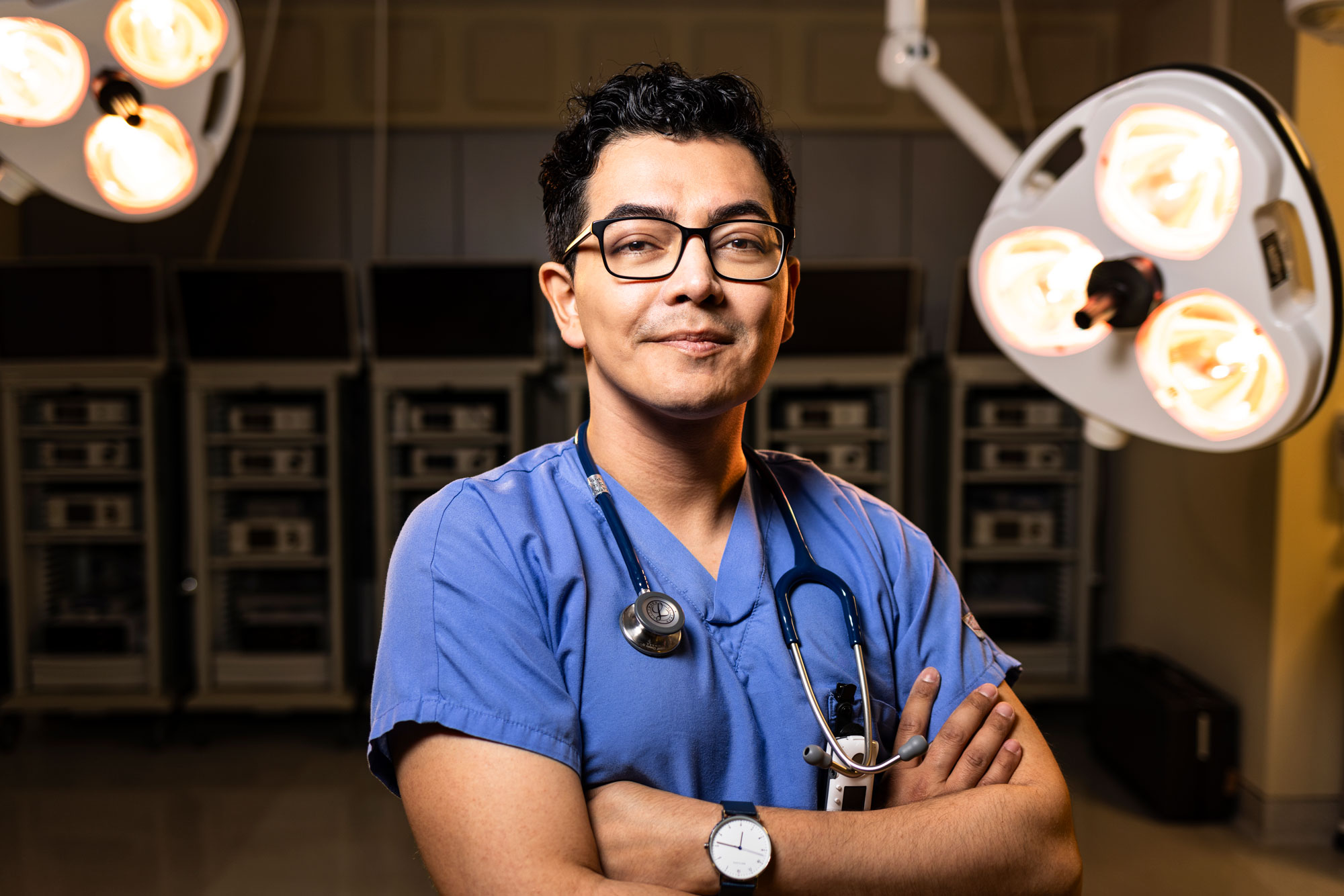Dressed in the salmon-pink scrubs designated for volunteers, he wiped down beds, prepared linens and welcomed patients seeking immediate care. If they were comfortable with it, Estrada would stick around to listen to their stories or observe procedures such as setting a broken bone.
Seeing a range of medical specialists, from pediatricians to neurosurgeons, caring for patients gave Estrada a front-row seat to the “full scope of medicine,” he says. “It was the first time I saw a community that resonated with me—a community focused on the well-being of other people.” That struck a chord in the math-and-science-loving teen, who began thinking about a future in medicine.
But Estrada’s path forward—first to the University of Washington and then to both medical and business school at Harvard University—wasn’t an easy one.
When he was 5 years old, Estrada’s family moved to Seattle from Mexico. Attaining citizenship proved to be an uphill climb, and their undocumented status brought many hardships. Although his parents worked six days a week, Estrada recalls that they couldn’t afford to buy milk—and their grueling work schedules made it difficult to access public health care. The fear of deportation followed Estrada everywhere. At school he felt isolated, and at home he suffered recurring nightmares of hiding in the family’s one-bedroom apartment to escape immigration officers.
But he stayed optimistic that things would get better. “There was always a little voice in my head saying, ‘Your future is in your hands, and education is the way forward,’” he recalls. He carried that mindset into high school, where he excelled in math and science, performed in plays and enjoyed being outdoors.
Getting into the UW, an academic powerhouse close to home, felt like an exciting step into the future he imagined for himself—but there were still financial hurdles to clear. At that time in the mid-2000s, undocumented students like Estrada weren’t eligible for any federal or state financial aid.
What seemed impossible was made a reality by the Costco Diversity Scholarship, awarded to high-achieving Washington students from underrepresented communities. When he was awarded the scholarship, Estrada breathed a sigh of relief, knowing he had guaranteed financial support throughout his undergraduate education.
Stepping onto the UW’s expansive campus in Seattle, Estrada initially felt lost. But he eventually found a supportive group of friends through Greek life—and an inspiring academic path in bioengineering, which applies engineering principles to biology and medicine. Eager to explore the combination of technology and health care, he saw in bioengineering how technology could help remove barriers like those his family had faced.
“It was exciting to apply what you know to help improve people’s lives and access to opportunities,” says Estrada. “Technology is that perfect solution to bridge people into the system in a way that accommodates their needs.”
